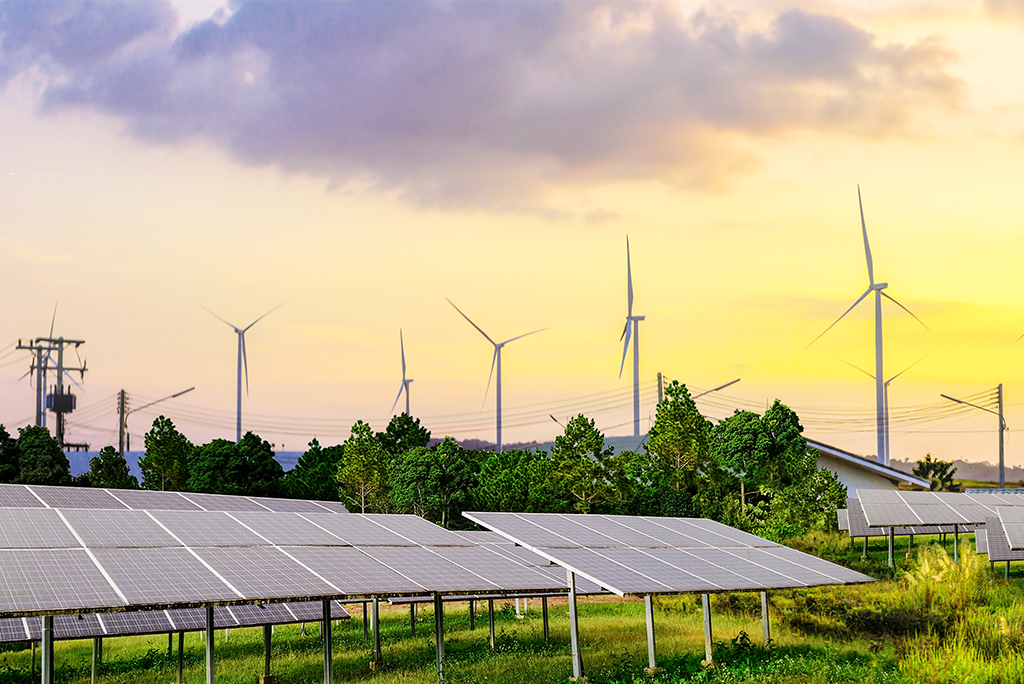
Renewable energies are surging. Between 2011 and 2020, the amount of energy the United States generated from solar and wind almost quadrupled. When combined with geothermal generation, it accounted for an annual growth of almost 15 percent, reports The Washington Post. Among the findings originally reported by the nonprofit Environment America Research and Policy Center and the nonpartisan research organization Frontier Group, wind, solar and geothermal will meet “current electricity demand levels” by 2035 as long as this growth rate continues.
Other findings from the report, which relied on U.S. Energy Information Administration data, include:
- The U.S. produced 470,141 gigawatt-hours of wind and solar electricity in 2020 compared to 125,820 in 2011
- Solar generation saw a 23-fold increase from 2011
- Wind saw an almost threefold increase
- Iowa, North Dakota, and Kansas now generate at least half the amount of electricity they use from solar and wind
- Geothermal generation remained mostly constant at 16,930 GWh as of 2020
Falling prices are largely behind the explosive growth in wind and solar, with utility-scale solar costs falling by about 80 percent between 2011 and 2018, according to a National Renewable Energy Lab (NREL) survey.
As CNBC reports, 2022 is expected to be a “record year” for wind and solar deployments. The report predicts 2022 will see 44 gigawatts of utility-scale solar (double 2021’s forecast) and 27 gigawatts of wind (well beyond its 2021 record of 16 gigawatts).
Blue vs Green Hydrogen
Despite these gains, renewable energy still faces tough obstacles. For example, many governments had hoped to make hydrogen from fossil fuels— known as “blue hydrogen”— in order to reduce their greenhouse gas emissions. However, according to a separate report from the Washington Post, a new study published in the journal Applied Energy states that blue hydrogen creates “substantial” greenhouse gas emissions that make climate change worse. This is true even when combined with carbon capture technology, which traps carbon dioxide and channels it into the ground.
“Hydrogen made from natural gas leads to more fugitive emissions— methane that is leaked into the environment during the extraction and processing of natural gas— compared to just burning natural gas directly,” states paper co-author Fiona Beck, a researcher from Australian National University, in The Washington Post. “Including [carbon capture and storage] in the process actually increases fugitive emissions further, as more natural gas is needed to fuel the process.”
One solution is “green hydrogen,” which uses renewable technologies to separate hydrogen from oxygen in water. However, many countries do not have enough renewable energy to generate enough hydrogen. Further, green hydrogen remains expensive, though is not always the case. For example, a recent study suggested that green hydrogen may already cost less than blue hydrogen in Australia, where plentiful sunshine, lands, and winds have spurred renewables in recent years and thus reduced their costs, according to The Washington Post.
Phasing out fossil fuels in place of renewables won’t be easy for many countries, and there are still many obstacles— both financial and technical— to overcome. However, as prices continue to fall and technologies improve, the future of renewable energy looks more positive than ever.
Connecting Distributed Energy Resources
Both leveraging distributed energy resources (DERs) and microgrids can help countries reach their green energy goals.
Introduction to IEEE Std 1547-2018: Connecting Distributed Energy Resources is a new course program that focuses on IEEE Standard 1547-2018™. This standard provides technical specifications for interconnection and interoperability between utility electric power systems (EPSs) and distributed energy resources. It also provides requirements relevant to the performance, operation, testing, safety considerations, and maintenance of the interconnection.
Contact an IEEE Content Specialist today to learn more about getting access to these courses for your organization.
Do you want to learn more about IEEE Standard 1547 for yourself? Visit the IEEE Learning Network.
Resources
Stevens, Pippa. (10 November 2021). 2022 will be a record year for wind and solar, new report finds. CNBC.
Root, Tik. (9 November 2021). Renewable energy in the U.S. nearly quadrupled in the past decade, report finds. The Washington Post.
Pannett, Rachel. (18 November 2021). It’s hailed as the clean energy of the future. But hydrogen produces ‘substantial’ emissions, study shows. The Washington Post.


[…] Wind and Solar Almost Quadruple in U.S., Expected to Set Records in 2021 Climate change whipped up plenty of destruction in 2021, but the year also saw hope for renewable energy. With prices falling, wind and solar power are booming in the United States. According to a report from The Washington Post, the amount of energy the country generated from solar and wind almost quadrupled between 2011 and 2020, and accounted for an annual growth of nearly 15 percent when combined with geothermal generation. Read the full article. […]